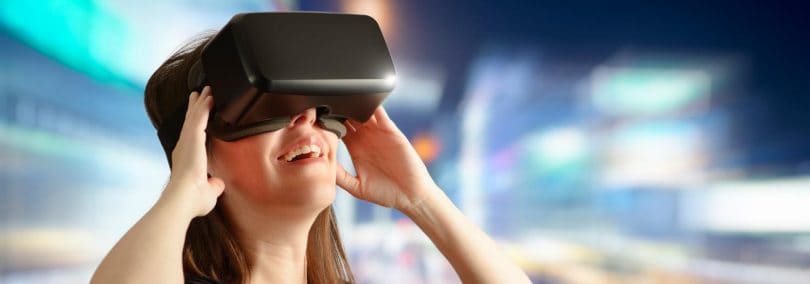How do we actually know what is real and what is not? Researchers from the University of Sussex are trying to find out exactly this and are investigating human consciousness – calculated with the help of Virtual Reality (VR).
In his exploration of consciousness, Anil Seth wanted to try something new: stroboscope light. A good stroboscope lamp, according to his theory, should be able to bring about a changed state of consciousness. “We are certainly not yet,” says Seth. “We have to be careful. If you irradiate someone with stroboscopic light, you get irregular data. ”
Seth is one of the directors of the Sackler Center for Consciousness Research at the University of Sussex. He spent most of his working life studying a fundamental question of science: how does consciousness actually develop? “My entire research is trying to figure out what happens in the brain when we perceive something,” he says.
The standard set-up of an experiment for perception for a long time was such that test persons had to cope with computer-assisted tests in a dark room. These experiments produce results but are not “ecologically valid” as the scientists say. This means that the experiments work in the laboratory, but do not reflect the complexity of the environment as it is found in the real world. Seth tries to eliminate this problem by working with external stimuli. From stroboscope to hallucinogenic drugs. Over the past few years he has begun to work with virtual reality.
“Neuroscience wants to find out how we perceive things as real. And when we think something exists in the real world, what makes this feeling. When we ask this question, VR becomes an important test tool, “says Seth.
The researcher uses VR to manipulate how we perceive ourselves and what role our own body plays in the perception of the self. “We can influence with VR in ways that we can not do with other means,” says Seth. “The potential for neuroscience is enormous and is only just beginning. In five years, it will be groundbreaking. “Here are three examples of how Seth, together with colleague Keisuke Suzuki VR, uses to better understand how we perceive the world and ourselves.
The unreliable object
In this experiment, Seth and Suzuki test when we perceive objects as real or only as images. “For a real object, we can see the backside even though we can not see it.” One hypothesis is that the brain predicts how sense sensations would change when interacting with the object. In the Augmented Reality, Seth and Suzuki have placed various strangely shaped objects that do not behave as they would in the real world. An object always shows the same person the same side, no matter how they rotate it. Another reacts to movements in an unreliable manner.
The dog hallucination
With Google’s Deep Dream algorithm, Seth and Suzuki investigate what happens in the brain with visual hallucinations, such as a psychosis or a drug. In this example, you can see the campus of the University of Sussex as a psychedelic hallucination with dog faces.
The rubber hand
The rubber hand illusion is an excellent party trick and a decisive experiment for the understanding of body perception. In the standard version, a spurious hand is placed on the table in front of the trial person, while the real hand is hidden behind a cardboard wall. The real and fake hand are then stroked at the same time with a brush. This results in the rubber hand being perceived as its own. In Seth’s VR version, a virtual hand can flash in sync with the heartbeat, changing the size or color. Thus, Seth can not only explore how formular the perception of one’s own body is, but also find out how the body’s perception of perception can occur, for example, in patients with dysmorphophobia. The university of Freiburg has carried out a somewhat rubbery experiment, more brutal.







